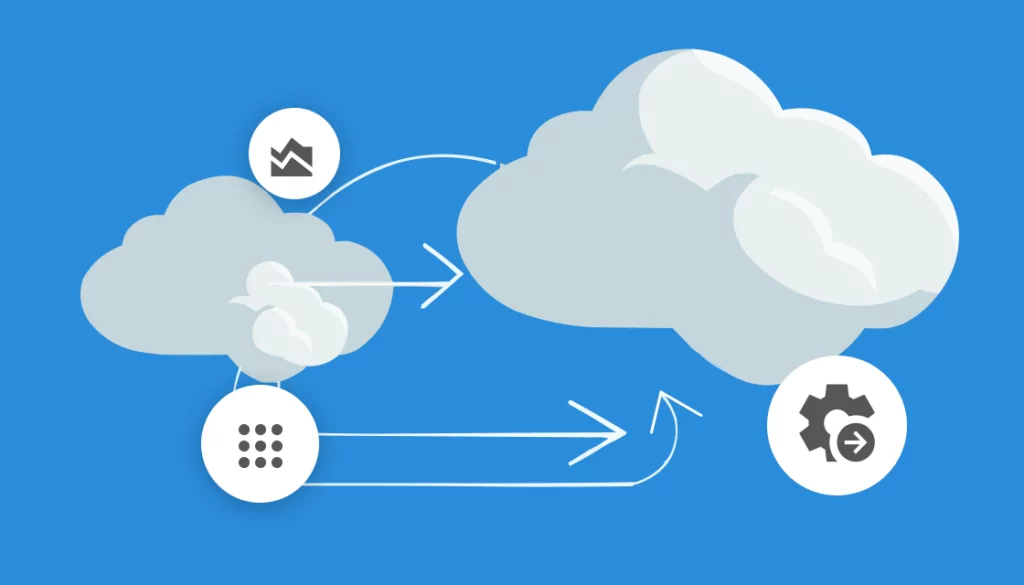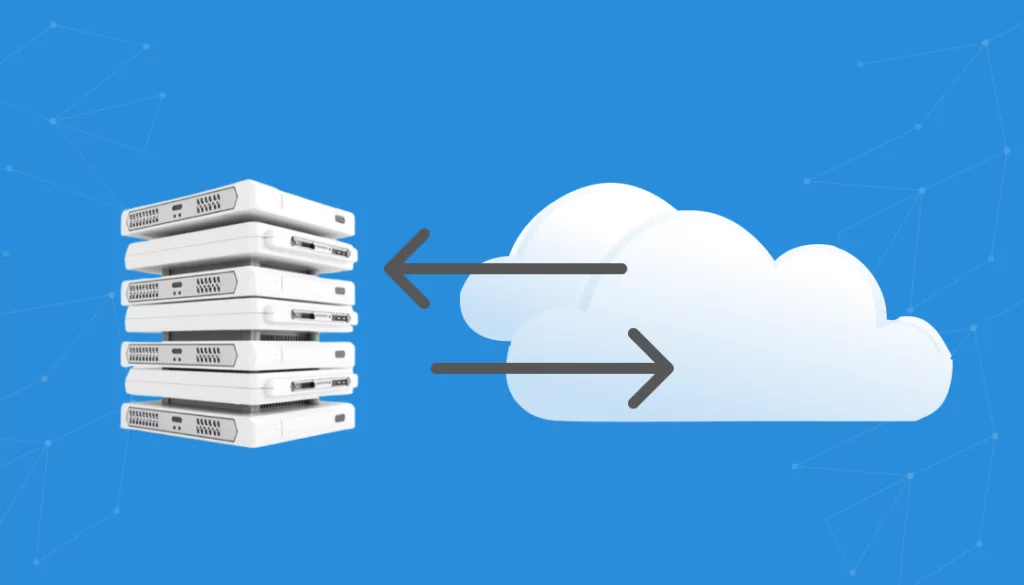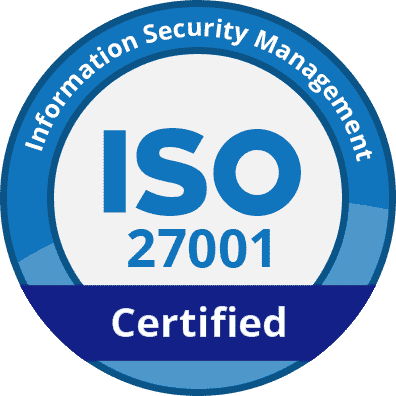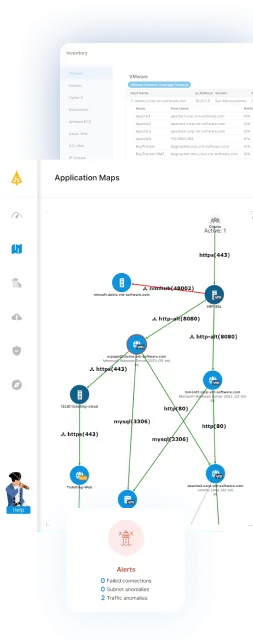What Is Cloud Migration Assessment?
Cloud migration assessment evaluates an organization’s current IT infrastructure to determine the feasibility and strategy for moving to a cloud-based environment. This involves analyzing existing systems, workloads, and applications to understand their suitability for cloud migration. The assessment helps identify potential challenges, optimize resource allocation, and prioritize workloads for migration.
By conducting a cloud migration assessment, organizations can align their IT strategies with business objectives and reduce operational risks. The assessment typically includes evaluating performance, security, compliance, and cost implications of moving to the cloud. It provides a roadmap for the migration process, helping ensure optimal resource utilization in the cloud environment.
Table of Contents
ToggleKey Components of a Cloud Migration Assessment
A cloud migration assessment typically includes the following components.
Infrastructure Analysis
Infrastructure analysis is where an organization’s physical and virtual resources are examined to evaluate their readiness for cloud deployment. This includes reviewing servers, storage, network architecture, and other hardware components. The analysis seeks to identify resource utilization patterns, performance bottlenecks, and capacity constraints in the cloud..
An infrastructure analysis reveals areas where infrastructure optimization can occur before and during the migration process. It provides insights into potential cost savings by identifying over-provisioned resources or legacy systems that can be decommissioned.
Application Portfolio Evaluation
An application portfolio evaluation assesses which applications are best suited for migration to the cloud. This involves cataloging and analyzing the entire set of applications within an organization, assessing their architecture, dependencies, and usage patterns. The evaluation identifies opportunities for re-hosting, re-platforming, or re-architecting applications.
Through application portfolio evaluation, organizations can prioritize applications for migration based on factors such as business value, complexity, and readiness. By understanding their application landscape, they can execute more informed migration strategies.
Security and Compliance Review
A security and compliance review assesses the existing security protocols and compliance requirements of an organization to ensure they align with cloud security standards. This review identifies vulnerabilities and compliance gaps that may expose the organization to risks during or after the migration. It also involves evaluating the security controls offered by cloud providers.
Ensuring that cloud services meet regulatory compliance standards is essential for data protection and overall integrity. This component of the assessment includes evaluating data encryption, identity management, and access controls.
Cost and ROI Estimation
Cost and ROI estimation involves predicting the financial implications of migrating to the cloud, including both short-term and long-term impacts. It assesses the initial investment required for migration and the operational cost savings expected post-migration. It includes cost-benefit analyses, budget forecasting, and consideration of hidden costs such as data transfer fees.
By evaluating potential ROI, organizations can make informed decisions regarding their cloud strategies. Understanding the financial landscape helps justify cloud investments by demonstrating the expected return in terms of improved efficiency and scalability.
Related content: Read our guide to application migration
Steps to Conduct a Cloud Migration Assessment
The process of carrying out a cloud migration assessment involves the following steps.
1. Discovery and Data Collection
Discovery and data collection involves gathering comprehensive information about the existing IT landscape, including hardware, software, and data assets. Accurate data collection provides a detailed understanding of current systems, configurations, and interdependencies.
During this phase, IT teams perform detailed inventories of servers, networks, databases, and applications. Discovery also includes gathering metrics related to resource usage patterns, application performance, and data workflows.
2. Workload Prioritization
Workload prioritization involves identifying and ranking workloads to determine their order of migration to the cloud. This process considers key factors such as business impact, complexity, dependencies, and readiness level. By prioritizing workloads, organizations can focus their migration efforts where they achieve maximum benefit.
Prioritization helps in dealing with applications that offer the greatest improvement potential first, whether through cost savings or performance enhancement. This approach allows organizations to spread out migration efforts, tackling less critical workloads later.
3. Migration Readiness Evaluation
Migration readiness evaluation assesses the preparedness of an organization’s infrastructure, applications, and personnel for cloud migration. This evaluation focuses on technical and operational factors, including system compatibility, staff skills, and change management processes.
Through readiness evaluation, organizations can identify gaps that may hinder successful migration. This evaluation might reveal deficiencies in existing IT capabilities, prompting training or process refinement.
4. Risk Assessment and Mitigation Planning
Risk assessment and mitigation planning analyzes potential risks associated with cloud migration and devises strategies to address them. This involves evaluating risks related to data loss, application downtime, security breaches, and compliance issues. Risk assessment helps organizations develop contingency plans for unexpected issues.
By identifying and planning for potential risks, organizations can minimize the impact of negative events during migration. Mitigation strategies ensure business continuity and maintain service quality throughout the transition.

Lanir specializes in founding new tech companies for Enterprise Software: Assemble and nurture a great team, Early stage funding to growth late stage, One design partner to hundreds of enterprise customers, MVP to Enterprise grade product, Low level kernel engineering to AI/ML and BigData, One advisory board to a long list of shareholders and board members of the worlds largest VCs
Tips from the Expert
In my experience, here are tips that can help you better execute a cloud migration assessment:
- Conduct an application dependency mapping session:
Go beyond standard dependency mapping to discover hidden or indirect dependencies among applications, databases, and systems. This can help prevent potential disruptions and avoid performance issues in a new cloud environment. - Incorporate a hybrid cloud assessment layer:
Evaluate which parts of your infrastructure and workloads might benefit from a hybrid model. Some workloads perform better in hybrid setups, offering advantages in latency, security, and compliance. - Prioritize data migration strategy by workload sensitivity:
Data handling is often the most complex part of cloud migration. Prioritize the migration of sensitive or mission-critical data with tailored compliance checks, encryption standards, and audit trails. This helps manage security risks and regulatory requirements upfront. - Factor in regional and cloud-provider-specific nuances:
Different cloud providers offer unique features based on region or service tiers. Take these nuances into account when planning workloads to optimize cost and performance. This is crucial for global or multi-region deployments. - Evaluate integration architecture for cloud compatibility:
Many legacy systems rely on specific integration frameworks that may not seamlessly extend to cloud ecosystems. Plan to either re-architect or replace incompatible integrations, ensuring they support cloud-native protocols (e.g., RESTful APIs).
Common Challenges in Cloud Migration Assessment
Organizations often face the following challenges when assessing the feasibility of cloud migration:
- Incomplete data collection: Missing or inaccurate data can lead to faulty analyses and misguided strategies. To counter this, organizations must ensure comprehensive data gathering across all systems, applications, and infrastructure components.
- Underestimating complexity: Having an inaccurate understanding of the effort required for successful cloud migration can lead to inadequate planning and resource allocation. Organizations often overlook the intricacies of application dependencies, data transformations, and integration challenges.
- Ignoring security implications: Neglecting security during the cloud migration assessment can expose an organization to significant risks such as data breaches and non-compliance. Advanced security measures must be integrated into plans, considering differences in on-premise and cloud environments.
- Resistance to change: Employees and stakeholders can impede the cloud migration assessment process if they don’t embrace the change. Concerns over job transformations, skill deficiencies, or distrust in new technologies contribute to apprehension.
- Budget constraints: Organizations may struggle to align financial resources with the requirements of assessment stages, risking project delays or incompleteness.
Best Practices for Cloud Migration Assessment
Organizations can implement the following practices to ensure the accuracy and comprehensiveness of their migration assessment.
Involve Stakeholders Early
Involving stakeholders early in the cloud migration assessment process is vital for gaining support and ensuring alignment with business objectives. Stakeholders from IT, finance, compliance, and various departments should be engaged to gather valuable insights and address concerns related to migration.
Early stakeholder buy-in promotes transparency and enables adequate resource allocation, ensuring that all parties understand the migration scope, timeline, and expected outcomes. It encourages cooperative decision-making, which is crucial for resolving conflicts and securing necessary approvals.
Align Assessment with Business Objectives
Aligning cloud migration assessment with business objectives ensures that the migration supports the organization’s strategic goals. This involves understanding business priorities and how the cloud can improve performance, efficiency, and innovation. It’s essential that assessments consider both immediate and long-term business needs.
By linking technical migration plans with business strategies, organizations can ensure that technology investments contribute to competitive advantage and operational excellence. This alignment aids in prioritizing initiatives, managing resources, and validating the value of cloud solutions.
Use a Structured Methodology
Using a structured methodology for cloud migration assessment ensures a systematic and complete evaluation process. A defined methodology provides step-by-step guidance across various assessment stages, ensuring consistency and thoroughness.
Implementing a structured approach helps organizations navigate challenges methodically, document findings in detail, and maintain adherence to industry standards. This brings clarity and order to the migration process, allowing teams to manage expectations, timelines, and deliverables.
Document Findings Thoroughly
Thorough documentation of findings during the cloud migration assessment provides valuable insights for present and future use. Documentation should include details of infrastructure and application evaluations, cost analyses, and potential risks identified during the assessment.
Detailed records support informed decision-making and offer a clear reference for reviewing migration outcomes. Proper documentation also facilitates knowledge transfer, stakeholder communication, and compliance with regulatory requirements.
Plan for Continuous Improvement
Planning for continuous improvement is essential for adapting to evolving technologies and business requirements in a cloud environment. This includes establishing feedback mechanisms and iterative processes to periodically review and refine cloud strategies post-migration.
A continuous improvement approach ensures that organizations remain agile, capitalizing on new features, integrations, and optimizations available in the cloud.
Related content: Read our guide to cloud migration tools
Cloud Migration Assessments with Faddom
Faddom’s application dependency mapping solution provides valuable insights for conducting a successful cloud migration assessment. By mapping both on-premises and cloud infrastructures, Faddom helps organizations visualize their entire IT landscape, identifying interdependencies and vulnerabilities that could impact cloud migration.
With Faddom, you can:
- Enhance Visibility: Gain a comprehensive view of your existing infrastructure, applications, and data workflows to ensure smooth migration.
- Identify Optimization Opportunities: Identify underutilized resources or legacy systems that can be retired, helping to optimize your cloud environment from day one.
- Assess Security and Compliance Risks: Evaluate your infrastructure’s compliance with industry regulations and security standards to reduce risks during the migration process.
- Accelerate Discovery and Documentation: Faddom’s agentless and real-time discovery ensures up-to-date documentation, helping you prioritize workloads and identify potential bottlenecks.
- Optimize Resource Allocation: By understanding infrastructure and application interdependencies, Faddom helps streamline resource allocation, ensuring cost-effective and efficient migration.
Faddom’s tool enables faster, more accurate assessments, allowing you to avoid common migration pitfalls and reduce the complexity of moving to the cloud.
Curious about how it works? Start your free trial using the form to the right of this article!








